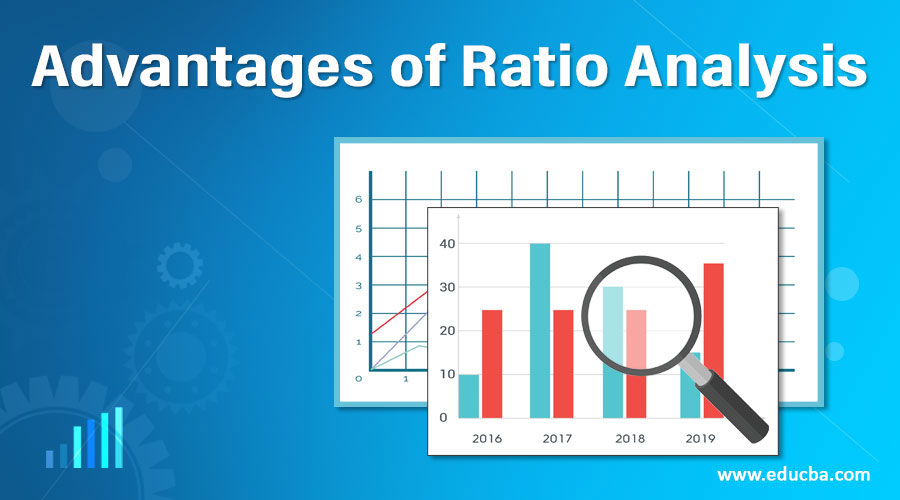Updated July 21, 2023

Definition of Ratio Analysis
Ratio Analysis helps the internal and external stakeholders understand and compare the numbers presented in the Income Statement, Balance Sheet, and Cash flow statement, thereby concluding the performance of the company in a given period to develop company strategy for the upcoming period and the investment strategy from the perspective of a given investment policy statement.
Explanation of Ratio Analysis
When the management, shareholders, creditors, or the board of directors look at the financial statements, each stakeholder attempts to understand and prepare a viewpoint of the company’s performance at the given time and its future approach. For example, suppose the company is altering the capital structure to be debt-free. In that case, it is aiming at a more equity-driven approach, and such information is reflected in the debt ratios.
When prospective investors look at the financial statements, they want to know how well the company’s securities fit in their investment portfolio. They look at ratios such as the P/E ratio and try to figure out whether the stock is over or undervalued and their strategy for including the stock in the portfolio.
Advantages of Ratio Analysis
There are multiple ratios, each explaining various aspects of the company’s performance, and therefore, they have their own advantages. Together, several ratios help determine the company’s overall stronghold and areas of improvement.
1. Efficiency
Ratios such as inventory turnover or sales turnover ratios help in understanding how well the company uses its assets and resources to generate sales or use up inventory. If these ratios are higher, the company is highly efficient; however, if they fall over time, it could imply that the inventory is building up, the product is getting obsolete, the marketing or sales strategy is lacking, and so on.
2. Solvency
These ratios help analyze whether the assets owned by the company are sufficient to meet the short and long-term viability of the company. These are looked at by the debt rating agencies such as the S&P and Moody’s to present how risky the company is for investment. These include coverage ratios, current ratios, quick ratios, and so on.
3. Liquidity
This ratio implies how much a company has invested in cash and near-cash securities and helps analyze how much money the company could generate at short notice to fulfill an unforeseen event. However, a very high investment in liquid assets can also imply that the company is missing out on greater interest from the investment in less liquid securities. Therefore the right level of liquidity is desired.
4. Market Performance
Ratios such as the P/E ratio, P/Sales ratio, P/BV ratio, EV/EBITDA, and so on help in understanding whether the company is over or undervalued in comparison with its peer group and should an investor includes the stock at the given level of risk involved. Further, it also helps the management to understand how a company’s performance reflects the share price and what kind of future strategy it should adopt.
5. Profitability
Ratios such as the Gross Profit Margin, Net Profit Margin, and Return on Equity help understand how much it is worth investing in the company. If the Net Profit margin is very low, but the Gross Profit Margin is very high, this implies that the company’s overheads are a little on the higher side, and the company should look into these to find out if there is an area of improvement.
6. Planning
Once the management has the ratios, they can develop future strategies such as capital expansion-related investments or whether leasing is a better option than buying a fixed asset. Combining the information with future market expectations helps the management develop a long-term expansion plan executed in phases over time.
7. Budgeting
We also plan operating expenses, other annual expenses, and investments based on the ratios; for example, if the inventory turnover ratio is very high, the management can place bulk orders and build up inventory to reduce ordering costs if the expectation of demand remains unchanged
8. Cross-Sectional Comparison
After bringing various company ratios on the same page by recalculating them based on the same accounting principles and assumptions, a good within-sector or industry comparison can be made and seen how well a company is performing concerning its competitors.
9. Time Series Analysis
Over time, if a company’s return on equity or the net profit margin increases, it is a good sign for investors seeking higher returns. Further ratios, such as the dividend payout ratio, help in assessing the growth opportunities available to the company. For example, suppose the company is giving out very high dividends. In that case, certain growth-seeking investors may not want to continue their investments, assuming the capital gain will be lower. However, value-oriented investors prefer stocks whose dividend flow is constant.
10. Cohesive Approach to looking at Financial Statements
Certain ratios have inputs from various financial statements, which help combine them and inform a complete analysis without missing out on information due to data being available in different statements. An example could be the Return on equity. The net income that goes into the numerator comes from the Income statement, and the Equity that goes into the denominator comes from the balance sheet. Therefore, we combine both statements in the analysis of this ratio.
Conclusion
We can conclude that ratio analysis is a popular tool investors and internal stakeholders use. It helps make strategic decisions by the management and investment decisions by the investing community. It gives a quick summary of the company’s performance, which can be elaborated upon by delving deeper into the financial statements and therefore act as a starting point for the analysis.
Recommended Articles
We hope that this EDUCBA information on “Advantages of Ratio Analysis” was beneficial to you. You can view EDUCBA’s recommended articles for more information.

